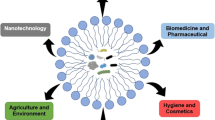Abstract.
Biosurfactants are valuable microbial amphiphilic molecules with effective surface-active and biological properties applicable to several industries and processes. Microbes synthesize them, especially during growth on water-immiscible substrates, providing an alternative to chemically prepared conventional surfactants. Because of their structural diversity (i.e., glycolipids, lipopeptides, fatty acids, etc.), low toxicity, and biodegradability, these molecules could be widely used in cosmetic, pharmaceutical, and food processes as emulsifiers, humectants, preservatives, and detergents. Moreover, they are ecologically safe and can be applied in bioremediation and waste treatments. They can be produced from various substrates, mainly renewable resources such as vegetable oils, distillery and dairy wastes, which are economical but have not been reported in detail. In this review, we report advances made in using renewable substrates for biosurfactant production and their newer applications.
Similar content being viewed by others
Author information
Authors and Affiliations
Additional information
Electronic Publication
Rights and permissions
About this article
Cite this article
Makkar, .R., Cameotra, .S. An update on the use of unconventional substrates for biosurfactant production and their new applications. Appl Microbiol Biotechnol 58, 428–434 (2002). https://doi.org/10.1007/s00253-001-0924-1
Received:
Revised:
Accepted:
Issue Date:
DOI: https://doi.org/10.1007/s00253-001-0924-1




